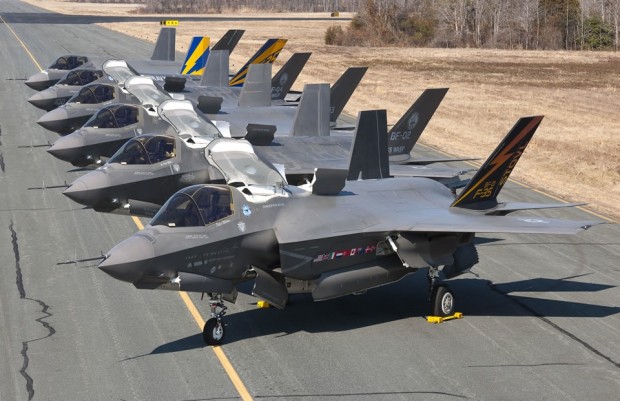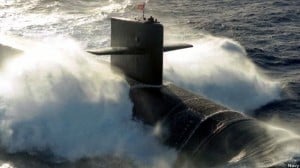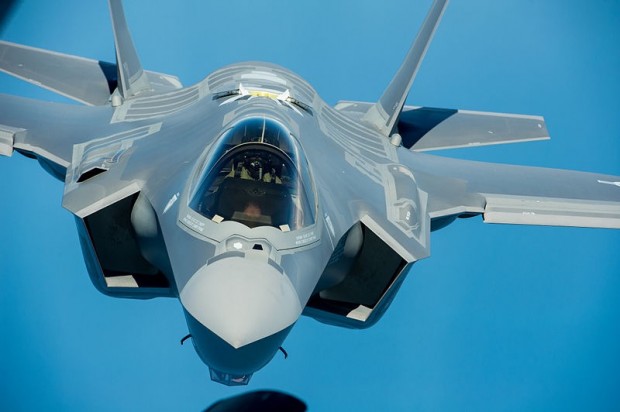How DoD Can Manage The Great Bow Wave
Posted on
Bob Hale knows budgets. He crafted them for the Air Force and he crafted them for the entire Defense Department. America faces a large spending spike by 2025 that grows even larger later. So, how can America manage this spending? Bob presents three approaches he thinks will work. Don’t get too depressed and read on! The Editor.
Defense Department spending requirements will rise sharply under current plans. How much will they rise? In a November 2014 study, the Congressional Budget Office (CBO) put the size of the increase, often called a funding “bow wave”, at about $60 billion above current funding levels by 2025, then rising to $80 billion in 2030. (Estimates reflect increases above the fiscal 2016 base-budget levels of funding and are adjusted to account for inflation.)
Since DoD plans its budgets five years in advance the next president’s team will have to start immediately to shape their policies and programs to accommodate the bow wave. How will they do that? Given current threats to national security, I think there is a realistic prospect for increases in defense funding. That may meet some, but not all, of the bow wave needs. Efficiencies will help reduce costs, but savings from them tend to be small compared to the size of the bow wave.
So, how to make up the difference? Based on many years of experience with making DoD programs fit within budget constraints, I believe much of the solution is likely to be achieved through cutting the total buys of weapons and programs combined with cutbacks in annual buys. They will be topped off by a few program terminations. Delays and smaller buys impose inefficiencies, but that will be the price of maintaining broad national security capabilities while accommodating budget limits.
There is always some funding bow wave in DoD plans but this one is big. It will largely be caused by new procurement programs (like the new ballistic missile submarine known as the Ohio Replacement Program and the Air Force bomber) and ongoing procurement programs that will be hit high-rate production in the 2020s (such as the F-35 aircraft and the KC-46 airborne tanker). Improving military readiness, combined with the ever-increasing complexity of DoD weapons, will push up operating costs.
Getting significant additional DoD funding may seem improbable in view of spending limits imposed by current law. However, the defense budget historically rises when threats to U.S. security are substantial, as is the case today. We are already seeing efforts in Congress to increase defense funding in fiscal 2017. A broad budget deal under a new Administration could lead to higher defense budgets and, hopefully, an end to sequestration. But even without the burden of sequestration, DoD budgets are not likely to increase by enough to eliminate the bow wave entirely.
Some services (especially the Navy) have called for the transfer of funds from other services to pay for what they term “national” programs like the new ballistic missile submarine. But U.S. forces fight jointly, which means that all programs should be national.
I believe three approaches will be used to make defense programs fit within available budgets. I start with the approach least likely to be used widely and move to more likely ones.
- Terminate or delay weapon and service programs. Thinning the herd of DoD programs, and leaving the survivors unscathed, makes for efficient programs. But the United States wants to maintain broad national security capabilities, which requires a wide array of defense initiatives. Also, in the years after 2010 many lower-priority programs were terminated or cut back. As a result, relatively few programs are likely to be drowned by the bow wave.
- Reduce total buys. Cutting back on weapon buys and other programs reduces costs and dampens the bow wave. This approach could affect big programs like the F-35 and the Air Force bomber, as well as smaller programs that make up much of what DoD buys. Fewer weapons mean greater risk in future conflicts, but the U.S. may have to accept that risk. To achieve savings quickly, reductions in total buys are often paired with a third approach.
- Reduce annual buys. Smaller annual buys can lead to increases in unit costs because overhead must be spread over fewer weapons and services. Smaller buys also delay availability of new capabilities. However, the approach is popular because a wide array of programs remain alive, though with smaller buys, and budget savings occur quickly. This approach has already been used to accommodate today’s budget limits. For example, DoD has trimmed annual buys of the F-35 aircraft to accommodate recent budget constraints. Reductions in annual buys will no doubt have to be imposed extensively as DoD formulates budgets for the 2020s.
The impending bow wave of funding requirements will significantly complicate the DoD management challenges confronting the next Administration. However, through artful use of the techniques described above, the Pentagon can limit inefficiencies while meeting high-priority defense requirements.
Robert Hale is a fellow at Booz Allen Hamilton. He was the Pentagon’s comptroller and chief financial officer from 2009 to 2014.
Subscribe to our newsletter
Promotions, new products and sales. Directly to your inbox.




